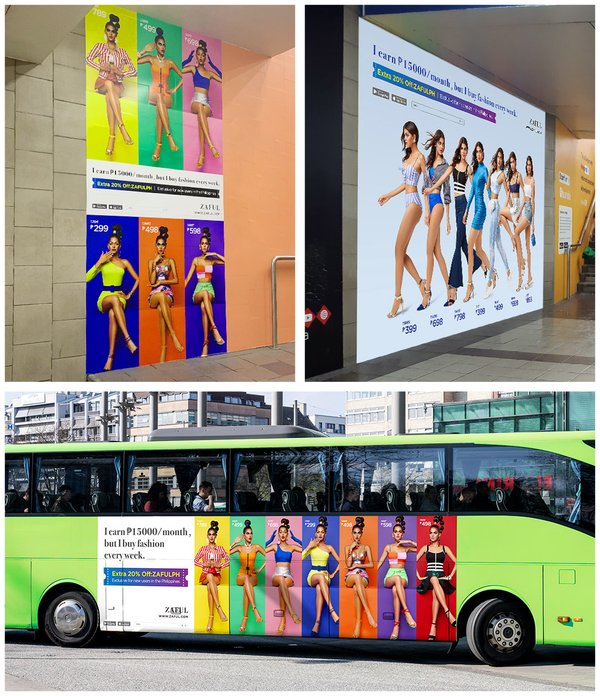How Transportation Advertising Can Change Public Transport Spaces Into Dynamic Marketing Operatings Systems
Transit advertising and marketing holds significant capacity to redefine public transport spaces right into vibrant marketing systems that engage and notify. By utilizing cutting-edge formats such as interactive kiosks and electronic display screens, brands can not only reach a varied target market but likewise boost the total commuter experience. This method develops an unique opportunity for brands to attach with customers in a setting that is typically ignored. As we discover the complex benefits and developing techniques of transportation advertising and marketing, it elevates the question of how this improvement could redefine our communications with both brands and the metropolitan environment.
Benefits of Transportation Advertising And Marketing

Additionally, transportation advertising is very affordable contrasted to standard media. It allows marketers to achieve high impacts at lower prices, taking full advantage of return on investment. The restricted target market of commuters gives a chance for brand names to convey their messages to people who are commonly receptive during their traveling times.
Additionally, the vibrant nature of transit marketing permits campaigns to be upgraded often, making sure that messaging continues to be appropriate and prompt. This versatility can be crucial in replying to market fads or promotional events, maintaining the brand name top-of-mind for consumers. Finally, the prevalent presence of transit marketing adds to brand name recall; repeated exposure within familiar traveling contexts enhances brand name awareness and promotes customer commitment, inevitably driving sales and enhancing brand track record.
Kinds Of Transportation Advertising
Public transport systems supply numerous layouts for advertising and marketing, each satisfying different advertising and marketing strategies and audience interaction techniques. One prominent kind is external bus and train wraps, which cover the whole lorry and develop a mobile signboard result, permitting for high presence in city settings. These covers can record focus as they go across active roads, getting to a diverse audience.
An additional prominent format is interior advertising and marketing, which consists of posters, digital screens, and advertisements on transportation seats. These placements engage guests during their journey, enhancing brand name messaging in a restricted space. Digital presents, particularly, provide the advantage of vibrant material, enabling marketers to update messages in real-time.
Terminal marketing is also substantial, including posters, banners, and interactive kiosks within transportation stations. These advertisements take advantage of foot traffic and can target details demographics based on area.
Finally, promotional collaborations with transit authorities can bring about one-of-a-kind campaigns, such as themed transit experiences or occasions, enhancing the general involvement with commuters. Each sort of transit marketing provides distinctive benefits, enabling brand names to tailor their strategy to successfully reach their target audience within the public transport environment.
Involving Commuters Properly
Commuters are progressively inundated with marketing messages throughout their daily journeys, making it essential for brands to involve them in cutting-edge ways. To catch focus in this crowded area, marketers need to prioritize imagination and importance. Making use of captivating visuals and succinct messaging can considerably improve the chance of engagement.
Interactive aspects, such as QR codes or enhanced fact attributes, can also transform static ads right into immersive experiences, cultivating a much deeper link with the audience. Brands ought to concentrate on attending to travelers' needs and interests, customizing messages to reverberate with their way of living, whether via promos for neighborhood businesses or services designed to enhance their commuting experience.
Moreover, timing plays an important function; tactically putting ads during top commuting hours can make best use of presence and influence. Engaging travelers successfully additionally includes leveraging social networks integration, permitting passengers to share their experiences or promotions directly from transportation systems, thus amplifying brand reach.
In significance, reliable involvement pivots on comprehending the commuter journey and developing engaging, interactive, and relevant advertising experiences that not just catch interest however additionally drive activity and commitment. By doing so, brand names can change public transportation into a vibrant marketing system that resonates with its audience.

Measuring Advertising And Marketing Impact
Just how can brands properly examine the efficiency of their marketing projects in transit atmospheres? Measuring the influence of transit advertising and marketing needs a multifaceted strategy that integrates qualitative and measurable Click This Link metrics. One prevalent approach is tracking engagement via mobile analytics, where brands can assess foot web traffic patterns and app communications previously, throughout, and after campaigns.
Studies can supply valuable understandings into brand name recall and customer sentiment, allowing brands to gauge how well their messages reverberate with travelers. Furthermore, keeping track of social media sites engagement pertaining to specific campaigns can disclose changes in public assumption and brand name discussion.

Furthermore, collaborating with transit firms can boost measurement accuracy, as they usually possess detailed market information on ridership trends. By integrating these methods, brand names can create an extensive understanding of their marketing performance, ensuring that their campaigns not only get to but also influence their target audiences efficiently.
Future Patterns en route Advertising
A considerable change is expected in transit marketing as technological improvements and changing customer actions reshape the landscape. Transit Advertising Philippines. The assimilation of electronic screens and multimedias is anticipated to improve involvement, permitting brands to deliver dynamic content that resonates with diverse target markets. As public transport systems embrace smart modern technology, marketers will certainly leverage real-time information analytics to customize messages based on guest demographics and actions
In addition, boosted fact (AR) is positioned to transform the way travelers communicate with advertisements. By giving immersive experiences, AR can transform a mundane trip into an interesting story that captures focus and promotes brand name loyalty. This development will likely urge advertisers to create more experiential projects that drive customer interaction.
Sustainability is one more vital trend affecting transit advertising and marketing. As environmental awareness grows, brand names will progressively look for to align with eco-friendly methods, utilizing sustainable products and promoting environment-friendly initiatives within their projects.
Conclusion
Finally, transportation marketing supplies significant benefits by boosting brand exposure and involving a restricted target market. Via numerous formats, such as outside wraps and electronic displays, it transforms public transport into a vivid advertising platform. Efficient interaction methods and durable dimension strategies further enhance its effect. As fads advance, the possibility for cutting-edge interactions in between brands and commuters is positioned to expand, ensuring that transportation advertising and marketing stays an essential component of modern-day advertising approaches.
Transportation advertising and marketing holds substantial capacity to redefine public transportation spaces into vibrant advertising and marketing systems that inform and engage. The prevalent existence of transit advertising adds to brand name recall; repeated exposure within familiar traveling contexts strengthens brand awareness and fosters customer loyalty, ultimately improving and driving sales brand reputation.
How can brand names precisely assess the effectiveness of their advertising and marketing campaigns in transportation atmospheres?In final thought, transit advertising and marketing provides significant benefits by improving brand name exposure and engaging a restricted audience. Transit Advertising Philippines. As patterns see this website advance, the capacity navigate to this site for cutting-edge communications between brand names and commuters is positioned to expand, making sure that transportation advertising and marketing remains an essential element of modern-day advertising strategies